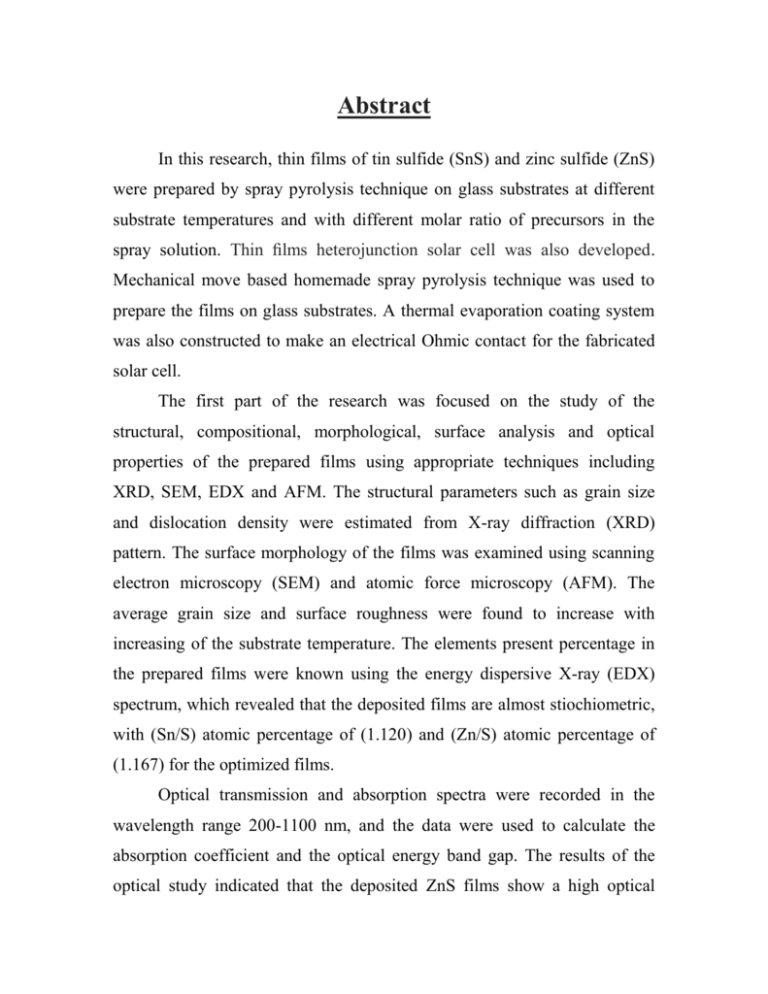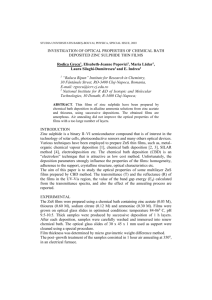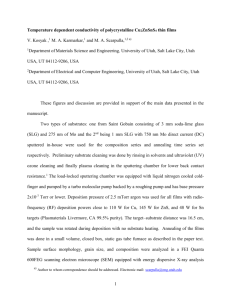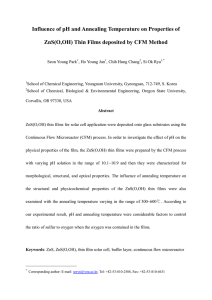Abstract
advertisement

Abstract In this research, thin films of tin sulfide (SnS) and zinc sulfide (ZnS) were prepared by spray pyrolysis technique on glass substrates at different substrate temperatures and with different molar ratio of precursors in the spray solution. Thin films heterojunction solar cell was also developed. Mechanical move based homemade spray pyrolysis technique was used to prepare the films on glass substrates. A thermal evaporation coating system was also constructed to make an electrical Ohmic contact for the fabricated solar cell. The first part of the research was focused on the study of the structural, compositional, morphological, surface analysis and optical properties of the prepared films using appropriate techniques including XRD, SEM, EDX and AFM. The structural parameters such as grain size and dislocation density were estimated from X-ray diffraction (XRD) pattern. The surface morphology of the films was examined using scanning electron microscopy (SEM) and atomic force microscopy (AFM). The average grain size and surface roughness were found to increase with increasing of the substrate temperature. The elements present percentage in the prepared films were known using the energy dispersive X-ray (EDX) spectrum, which revealed that the deposited films are almost stiochiometric, with (Sn/S) atomic percentage of (1.120) and (Zn/S) atomic percentage of (1.167) for the optimized films. Optical transmission and absorption spectra were recorded in the wavelength range 200-1100 nm, and the data were used to calculate the absorption coefficient and the optical energy band gap. The results of the optical study indicated that the deposited ZnS films show a high optical transmittance in the visible and near-infrared region, while SnS show a high optical transmittance in the near-infrared region . The study of the structural of the obtained SnS and ZnS films show that they are strongly dependent on the substrate temperature and it is observed that the best crystallinity of the films is obtained at the 375 oC substrate temperature with a molar ratio of 1:2 of the precursors in spray solution, and 375 oC found to be optimum temperature to prepare the best ZnS and SnS thin films. The obtained results were discussed in view of testing the suitability of SnS film as an absorber and ZnS film as a window for the fabrication solar cell. The second part of the research was focused on the performance of heterojunction solar cell with the configuration, ITO/ZnS/SnS/In. The optimized prepared SnS film was used as an absorber layer for solar cell and ZnS film used as a window layer for solar cell. Different metallization schemes were examined for films Ohmic contacts. The I-V characteristics for indium metal have been found to be fairly linear in the wide range of applied voltage which indicates good Ohmic contacts behavior. The TLM treated indium metal contacts are useful for (ZnS, SnS) based devices since it exhibited better and thermal stable properties as compared to other examined metal structures for Ohmic contacts. The specific contact resistance of the indium has also been measured by the TLM and obtained to be of an order of magnitude lower than that of other metals. The illuminated current-voltage characteristics were measured to evaluate our fabricated solar cell device performance. The most important cell parameters, open circuit voltage (Voc), short circuit current (Ish), maximum voltage (Vmax.), maximum current (Imax.), fill factor (FF), and the cell efficiency (η) were determined and compared with the recently reported theoretical analysis values. The calculated value of the fill factor was found to be (47.8%) and the efficiency of the cell was found to be (0.71%).











